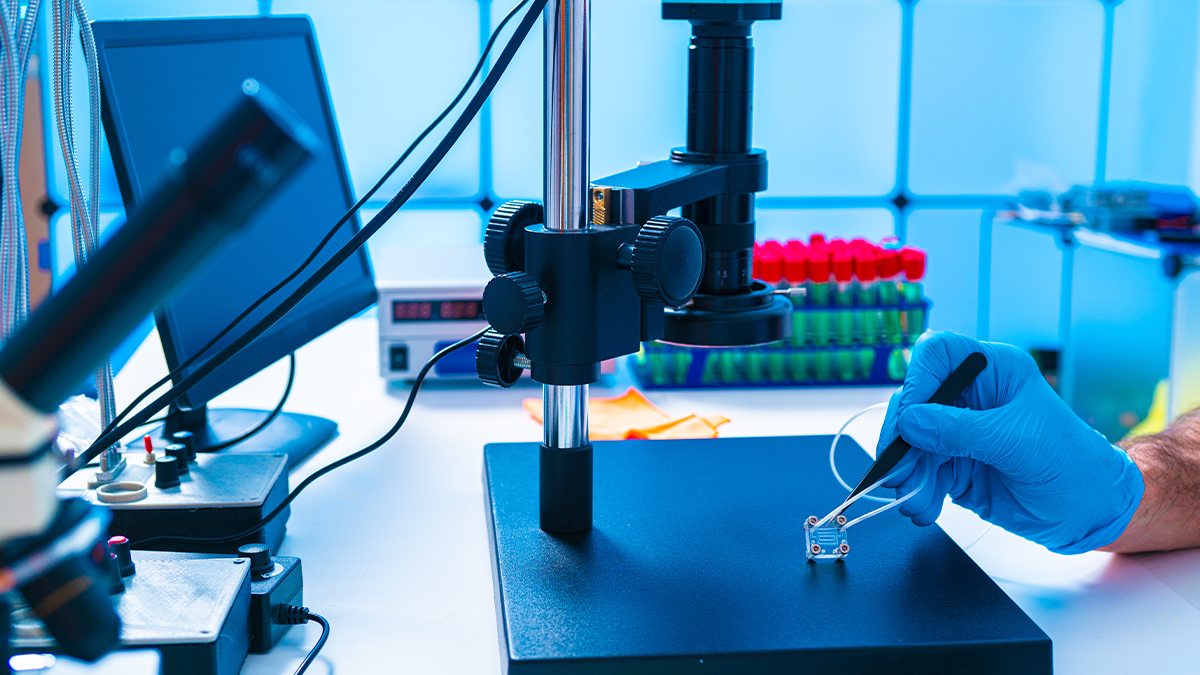Collaborating for breakthroughs
The Joint Department of Biomedical Engineering at Carolina and NC State leverages the best of both universities to create a unique program for students.

The mission of the Joint Department of Biomedical Engineering is to unite engineering and medicine to improve lives.
Since launching in 2003, the collaboration between the two universities has done just that. The unique partnership between two flagship universities brings together the faculty and staff of the UNC School of Medicine, UNC College of Arts and Sciences and NC State’s College of Engineering to teach and mentor the next generation of biomedical engineers.
Hannah Ni, Noah Rubin and Nita Prabhu are among the more than 600 students enrolled in the joint department, and the cooperative purpose of the program has bolstered their academic experience and research goals.
Continue reading about their time studying biomedical engineering and what they learned through the collaborative program.
Hannah Ni
Hannah Ni is the only one of her five sisters to attend Carolina instead of NC State, but now that she’s enrolled in the joint biomedical engineering program, she likes to say that she’s partially an NC State student, even though she also bleeds Carolina blue.
“I originally chose Carolina over NC State because I wanted to be a premedical student,” Ni says. “I learned through my courses that there are other ways to help people, and by going into the biomedical industry, I can make advances in my field.”
A senior biomedical engineering student, Ni has focused her studies on regenerative medicine and rehabilitation engineering, and she has a position with a pharmaceutical company waiting for her after graduation in the spring. Ni attributes her success in the program and finding what she’s passionate about in the field to her professors at both Carolina and NC State.
“I’ve completed three internships, and two of those were with companies that the biomedical engineering department connected me with,” Ni says. “That work experience helped me decide what path I wanted to pursue after graduation and confirmed that I enjoy the hands-on lab setting.”
As her family’s “half-NC State” student, Ni says that the collaboration between the two schools bridges the gap between medicine and engineering.
“One of the great things about the program is having the best of both worlds and every opportunity to learn from professors who are the best in all their fields,” Ni says.
Noah Rubin
Fifth-year Ph.D. student Noah Rubin decided to pursue his doctorate at Carolina and NC State because of the collaborative nature of the biomedical engineering program.
“We can take advantage of the UNC School of Medicine’s expertise as well as NC State’s College of Engineering expertise,” Rubin says. “Through those departments, we get access to resources that bring forward the best of both worlds for biomedical engineering research.”
Rubin’s current research involves measuring individual motor neuron firings to improve control of assistive devices for amputees and those with mobility impairment. When conducting his research, Rubin often commutes between Chapel Hill and Raleigh to use different lab spaces and equipment for his experiments.
His first project was based in the Carolina labs using an EMG array system, and now his current project is based out of the NC State labs to utilize their Biodex System.
“In multiple studies I’ve conducted, there’s equipment from Carolina that I use for one aspect and equipment from State that I use for another,” Rubin says. “I’m grateful how many faculty are available across both campuses to promote collaborative ideas and interdisciplinary approaches in our science.”
Nita Prabhu
The dual nature of the biomedical engineering program is what helped senior Nita Prabhu decide what major to pursue four years ago when she enrolled at Carolina. Although she comes from a family of engineers, Prabhu wanted the freedom to explore every aspect of the field and decide for herself what future career to pursue.
“In our program, everyone gets to experience the biological and engineering focuses and decide what path they want to pursue, and those experiences helped me determine that I wanted to focus on rehabilitative engineering,” Prabhu says.
During her time in the biomedical engineering program, Prabhu has valued taking courses with students outside of her major — studying music at Carolina and taking a multidisciplinary engineering course at NC State — because of the new perspectives they bring to the classroom. But the joint program also fostered friendships between Prabhu’s class that she believes are unique to their program.
“Since the students are dually enrolled, it was comforting to have a group of familiar faces when going back and forth between Carolina and NC State,” Prabhu says. “We became closer as a group while we crossed campuses to take classes, and now we collaborate on projects and research.”
After graduation, Prabhu wants to go into the biomedical industry with plans to also pursue an advanced degree in electrical engineering to improve medical devices.
“I think what I’ve learned at Carolina has prepared me to go into the industry immediately or pursue higher education because all our research, classes and internships have prepared us to be robust scientists,” Prabhu says.




